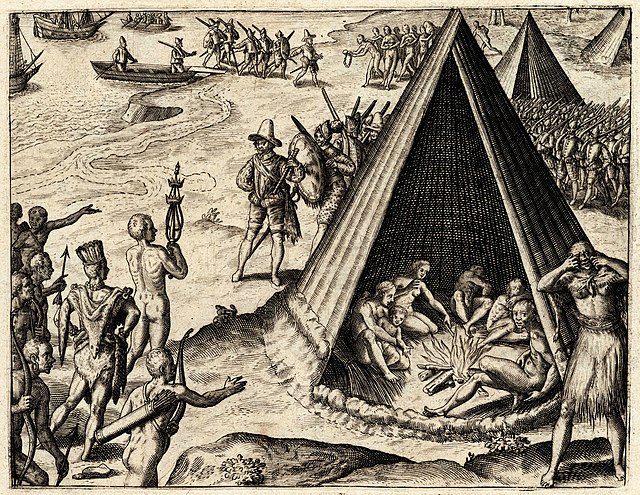New Albion, also known as Nova Albion, was the name of the continental area north of Mexico claimed by Sir Francis Drake for England when he landed on the North American west coast in 1579. This claim became the justification for English charters across America to the Atlantic coast and soon influenced further national expansion projects on the continent. Drake's landing site has been identified as Drake's Bay, which is part of Point Reyes National Seashore.
Drake's Landing in New Albion, 1579, engraving published by Theodor De Bry, 1590
New Albion
Drakes Bay and the white cliffs which inspired the name Nova Albion.
This basket, on display at the Jesse Peter Museum, is similar to the fully feathered basket described in The World Encompassed.
Albion is an alternative name for Great Britain. The oldest attestation of the toponym comes from the Greek language. It is sometimes used poetically and generally to refer to the island, but is less common than "Britain" today. The name for Scotland in most of the Celtic languages is related to Albion: Alba in Scottish Gaelic, Albain in Irish, Nalbin in Manx and Alban in Welsh and Cornish. These names were later Latinised as Albania and Anglicised as Albany, which were once alternative names for Scotland.
The White Cliffs of Dover may have given rise to the name Albion.
Albina and other daughters of Diodicias (front). Two giants of Albion are in the background, encountered by a ship carrying Brutus and his men. Brut Chronicle, British Library Royal 19 C IX, 1450–1475






